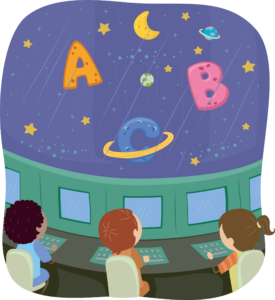
In the bustling world of education, there’s a critical aspect that often gets overshadowed by traditional academic subjects – social-emotional learning. It’s the process through which children and adults understand and manage emotions, set and achieve positive goals, feel and show empathy for others, establish and maintain positive relationships, and make responsible decisions. These skills are vital in our rapidly changing, interconnected world and contribute significantly to a child’s overall well-being and success in life.
For educators, homeschooling parents, and other caregivers, encouraging social-emotional learning is not just an educational goal—it’s a personal mission. It forms the crux of shaping resilient, empathetic, and emotionally aware individuals. Here, we delve deeper into the importance of expressing one’s emotions, along with some practical activities for kids and teens to bolster their emotional intelligence.
The Power of Expressing Emotions: An Essential Pillar of Social-Emotional Learning

Expressing one’s emotions is a fundamental part of being human. It goes far beyond just naming feelings; it’s about understanding their root causes, effects, and how to handle them responsibly. This emotional awareness is a core part of social-emotional learning, contributing to stronger relationships, improved decision-making, and enhanced mental health.
In essence, when children are equipped with the skills to express their emotions appropriately, they become better at communicating their needs and feelings to others. They learn how to react to situations in a way that respects their emotions and those of others. This can lead to increased empathy, understanding, and mutual respect, forming a foundation for positive social interactions.
Moreover, the act of expressing emotions also contributes to better mental health. Bottling up emotions can lead to stress, anxiety, and other mental health issues. By providing an outlet for emotions, children can cope better with their feelings, reducing stress and promoting psychological well-being.
Being able to express one’s emotions is also linked to resilience. Life will inevitably present challenges and disappointments, and being able to express and navigate one’s emotions can help children and teens bounce back from these experiences.
In short, the power of expressing emotions is immense. By incorporating this into the broader framework of social-emotional learning, we can pave the way for emotionally healthy, resilient, and empathetic individuals who are well-equipped to navigate life’s ups and downs.
The Building Blocks: Emotional Intelligence Activities for Kids

1. Feelings Charades: An interactive game of charades can help children identify and express a wide range of emotions. Here, kids can pick a card with a written emotion and act it out for others to guess. It’s a fun, hands-on way to learn about feelings.
2. Daily Mood Tracker: Encourage children to maintain a daily mood tracker. They can use colors, symbols, or even clipart images to represent their feelings. This regular practice enhances self-awareness and promotes emotional literacy.
3. Emotion-Regulation Breathing Exercises: Teach children simple breathing exercises that can help them calm down during emotional upheavals. It’s a practical tool that fosters emotional regulation.
4. Emotion Picture Books: Using picture books that depict different emotions can be a great tool to help younger children understand and express feelings. Discuss the emotions of the characters, ask the children how they might feel in similar situations, and encourage them to draw their own emotion pictures.
5. The ‘Emotion Wheel’ Exercise: An emotion wheel is a tool that helps children identify the nuances in their feelings. It starts with basic emotions in the center and becomes more specific toward the outer edges. This can assist children in distinguishing between similar emotions and expressing them more accurately.
Essential Tips for Teens: Harnessing the Power of Emotional Intelligence

1. Journaling: Encourage teens to keep an emotions journal. By writing about their feelings, they can gain a deeper understanding of their emotions and their triggers, developing a strong sense of self-awareness.
2. Role-Playing Scenarios: Role-playing different situations can be an effective way to help teens navigate complex emotional landscapes. It offers them a safe space to explore and express their feelings.
3. Mindfulness Activities: Mindfulness, whether achieved through meditation, yoga, or other activities, can significantly enhance emotional intelligence. It promotes self-awareness, focus, and an ability to respond rather than react impulsively to emotions.
4. Empathy Practice: Encourage teens to put themselves in other people’s shoes to understand their feelings. This can be done through discussion, role-play, or even by analyzing characters in books and movies. It will help them to better understand and respond to the emotions of others.
5. Assertiveness Training: Teach teens to express their feelings and desires assertively, not aggressively. This includes using “I” statements to express feelings, maintaining eye contact, and using a firm but respectful tone. It allows them to advocate for themselves while respecting the feelings and rights of others.
Key Takeaways

Social-emotional learning and expressing emotions are intrinsically linked. By fostering a safe and supportive environment for children and teens to express their feelings, we can equip them with the skills to manage life’s ups and downs resiliently. As educators and caregivers, our role isn’t just to teach academics but also to shape emotionally intelligent individuals who can thrive in all aspects of life. Remember, emotional intelligence isn’t built in a day, but with consistent effort and the right tools, we can pave the way for a healthier, happier future for our children.
In conclusion, promoting social-emotional learning and nurturing the ability to express emotions are invaluable tools in a child’s development toolkit. They help to mold resilient, compassionate, and self-aware individuals who are equipped to navigate the intricacies of life’s emotional landscape. The activities outlined in this article offer practical steps toward fostering emotional intelligence in kids and teens, but it’s important to remember that every child is unique and may require different strategies. As educators and caregivers, let’s continue to prioritize these skills and cultivate a generation rich in emotional intelligence, ready to face any challenge with understanding, empathy, and resilience. This is not just education – it’s life preparation.



